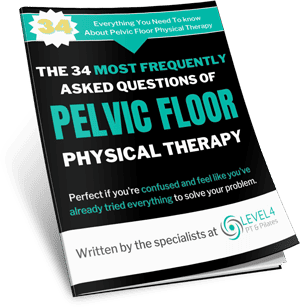We had a woman from Encinitas, CA call us this week and asked us this…
“I am 52 year old mother of 4 children and I was intrigued by your last blog and all of the helpful information you had on the fitness mistakes people make when trying to stay fit…especially during the quarantine. For years now, I’ve been ashamed to admit that I have let myself go and have gained more weight than I would have liked. In all honesty, I don’t know how I let myself get like this and now it’s making feel depressed. Deep down inside I have been wanting to do something to get myself back in shape but since I don’t own any exercise equipment and the gyms are closed; it’s making it really easy for me to continue my sedentary habit. My husband has suggested we can begin walking in the evenings after dinner but I feel like it is not going to be strenuous enough to help me lose weight. Do you have any helpful advice for me?”
Cindy, 52, Encinitas, CA
When it comes to exercise, if you had bothered to ask my younger self about what we should be doing every day with our bodies to help us lose weight and stay in shape, going for a walk wouldn’t often come top of my list. You were likely to get a response that included trendier workouts – like lifting weights, high-intensity interval training (HIIT), boxing, sprinting, and brutalist cardio-respiratory conditioning, etc.
And this was before our communities were forever changed by the current global pandemic.
Now, as my more measured, sheltered, mature, and considered self, I would say you should strive to have some sort of daily physical practice that you love and potentially bonds you to other people like online virtual fitness classes.
Since gyms are closed due to the current state mandate, I would agree with your husband in that you need to walk more, like, a lot.
While I may have pulled back (a bit) on believing that everyone should have some kind of physical practice that includes deadlifting at LEAST 1.5x their body weight, I have come to believe far more that our failure to walk as much as we should is costing us a great deal of lost potential in both health and happiness.
There was a time in our recent memory where we had to move at least a little bit each day. We walked to school, we walked to the grocery store, we walked to get lunch at the office…We moved more than we may be able at the moment. Our very recent ancestral selves spent a great deal of time walking.
As we began to shelter in place, we went from moving a little, to moving even less. And this is the last thing we should be doing.
< Why Sitting Is Taking Years Off Your Life >
In regard to how far and for how long you should walk, let’s set the record straight with a very popular question that we are asked quite frequently.
Should you really take 10,000 steps a day?
Most people are familiar with the idea that we should strive for a daily step count of ten-thousand. Believe it or not, there is no reason that this number should hold the power it does.
So how did this myth get popularized?
Well, it’s because Fitbit starts everyone off with a 10,000-step goal, and here’s why: It adds up to about five miles each day for most people, which includes about 30 minutes of daily exercise—satisfying the US Centers for Disease Control (CDC) Activity Guidelines recommendation of at least 150 minutes of moderate exercise per week.
Thing is, 10,000 steps per day might not make sense for you…
You may need to complete more if you want to lose a certain amount of weight or take fewer steps if you’re new to fitness. Your step goal can vary depending on your needs, and it can also shift over time.
The cold hard facts
In terms of steps (not even brisk walking), most people in the US walk under 5000 steps a day, which incidentally classifies these under movers as “clinically sedentary.”
But the reality is, we just don’t move much because we don’t have to. And now, with shelter in place, my bet is most people are moving even less than that.
I’m not alone in noticing the fact that, because exercising and moving is now much more difficult to do, we find ourselves missing the little activity we had!
The truth is that there probably isn’t a magic step count number. The ideal number is as many as you can fit into your day.
Dr. Dawn and I regularly find ourselves lecturing to high school students for career day presentations and we will often have them pull out their smartphones to do a spot check for steps.
You may not know that most of our phones actually capture this information. Since most of us have our phones with us most of the time (this is for sure true when it comes to high school students), this background step-counting feature of our phones is accurate enough to get a decent step count snapshot.
Without making human biology feel complex and overwhelming, let me simplify this for you. We were made to move.
Unfortunately, many people often discount walking as a serious exercise because of a perceived lack of intensity.
If we are all currently stuck at home without our gyms or our normal routines, now is the time to control what we can control. You may not have cardio equipment and barbells, but you still have your feet.
So, let’s dive into 6 benefits of walking and what I believe makes walking the most underrated exercise.
1. It’s easy.
Granted, going for a walk acts against our in-built tendency to conserve energy. Remember, for most of our history, food was hard to come by. After a long day walking and foraging and hunting, our ancestors would sit and maybe tell stories or sing songs. But we’ve largely solved the food gathering problem now; shops and restaurants and home deliveries make cheap calories easily available. We no longer walk mile after mile to gather food. Instead, we can sit and eat, easily. Perhaps too easily. We have designed movement out of our world and put more sitting around into it.
It’s difficult to motivate yourself to work out knowing there will be muscle soreness later. You don’t need an expensive gym membership, classes, or special equipment. All you need is a pair of walking shoes. Just lace them up, grab your keys, and go—no other gear or planning required. You can literally wear your work clothes and do it on your lunch break. Not to mention, it’s free. Everything in life should be so easy.
2. You can do it (basically) anywhere.
You can walk in all of the following situations:
- Indoors or outside (trails, park, beach).
- When you travel (It’s ideal for sightseeing, though make sure you remember how to get back.)
- At the office (during a phone call or lunchtime)
- Alone or with others
- IN A SHOPPING MALL! (Once they re-open)
3. It burns calories.
Healthy bodies come in all different shapes and sizes, and walking is a wonderful, inclusive exercise for people across the spectrum. Whether you’re walking for weight loss, to maintain current weight, or just to keep your other biomarkers in tip-top shape, hitting the treadmill or sidewalk will help you achieve those goals.
If you want to get into the math, walking one mile burns approximately 100 calories; that’s not too shabby for 15 to 20 minutes of physical activity.
Just keep in mind that it’s estimated that 3,500 calories are equal to one pound of fat.
So in general, if you cut about 500 to 1,000 calories a day from your typical diet, you’d lose about 1 to 2 pounds a week.
4. It keeps your mind sharp.
Only one hour of walking for exercise three times a week improves cognition and has the potential to stave off dementia. If you’re over the age of 40, what’s not to love about a longer attention span and faster problem-solving skills?
5. It helps you live longer.
What’s not to love about an activity that can help your aging—or how to halt it, rather. When you look at the science, moving—even for just a couple minutes at a time—strongly influences longevity.
Recent experiments show that as few as three or four days of inactivity reduces muscle mass in the legs, starting to replace muscle with deposits of fat. This isn’t much of a problem when you’re 30, but it is when you are 60, needing assistance to stand up from your chair.
The cure?…
Get up, walkabout, and fight the frailty that can come with aging. It turns out that little things such as walking can add up to an increased lifespan. We’ll take it!
6. It makes you happy.
The endorphins would tell you this themselves if they could talk, but walking is a proven mood booster. Just minutes of walking can lead to an upswing in cheerfulness, sociability, and self-confidence.
Putting it all together
One of the challenges we all face during the COVID-19 lockdowns is getting off our butts and getting enough steps in our day. Walking more.
Walking is the movement that we all profit from and have evolved for. Walk we must, and walk we should, to keep our mental and physical worlds open and to stop the walls from closing in.
IF you aren’t able to go outside, just go about living in your home. IF you can go outside, make walking your job…
Don’t wait for the gyms to open back up again to begin living a more active life to improve your health. Instead, take the same mindset my 9 year-old-daughter Sophia has when she puts on her favorite t-shirt 2-3 times a week which says, “The world is my gym.”
So there you have it, 6 reasons as to why I believe makes walking the most underrated exercise and why you need to make a date with your athletic shoes for a stroll around the block (and beyond!) ASAP.
And as always, remember that this is a long game we are all playing. We will never “win fitness” by walking enough, but we may finally find out that we can be human enough.
Now get out and move.
Dedicated to your health,
Dr. Oscar
- Can Physical Therapy Help My Muscles After Having Covid? - January 26, 2022
- The Real Story Behind What’s Causing Your Sciatica - August 30, 2021
- Should I Have Surgery to Repair a Tear in My Rotator Cuff? - February 9, 2021





















